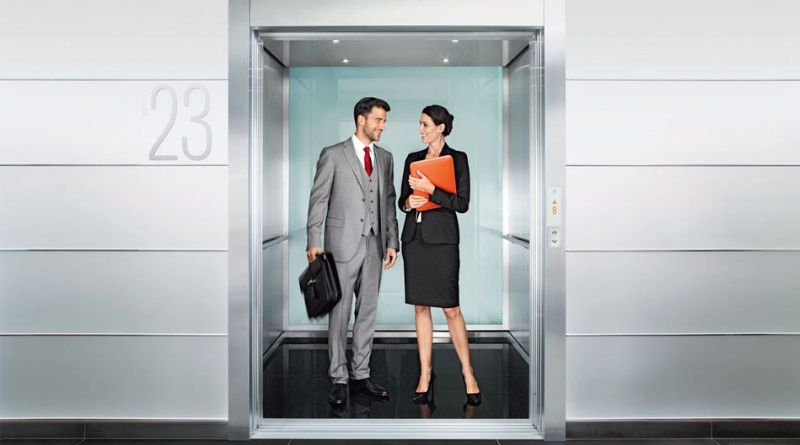Elevator design has come a long way since its inception, evolving not just in terms of technology but also in aesthetics, efficiency, and user experience. As buildings continue to grow taller and urbanization expands, elevators are becoming more critical than ever for smooth, efficient movement between floors. The latest trends in elevator design reflect the advancements in technology, sustainability, and aesthetic choices that influence not only the building’s functionality but also the overall user experience.
Table of Contents
In this article, we will explore the key trends in elevator design, how they improve efficiency, sustainability, and design appeal, and what the future holds for this vital part of modern architecture.
The Evolution of Elevator Design
Before diving into the trends, it is essential to understand the journey of elevator design. The first elevators were simple pulley systems with basic functionality, primarily used in industrial settings. Over time, elevators became more advanced with the introduction of hydraulic lifts and, later, traction drives, allowing for taller and faster buildings. Today, elevators are integral components of residential, commercial, and industrial architecture, used for mobility, convenience, and in some cases, luxury.
The modern elevator no longer focuses solely on function; it also places emphasis on comfort, style, and innovation. This shift in design reflects the technological and cultural advancements of our time.
Key Trends in Elevator Design
1. Sustainability and Energy Efficiency
One of the most significant trends in elevator design is sustainability. As global environmental concerns grow, building owners and designers are increasingly focusing on energy-efficient elevators to reduce the carbon footprint of high-rise buildings.
Modern elevators now incorporate energy-efficient technologies, including:
- Regenerative Drives: These systems capture excess energy produced during the elevator’s descent and feed it back into the building’s power grid. This process can significantly reduce energy consumption, making the elevator more eco-friendly.
- LED Lighting: LED lighting has replaced traditional incandescent bulbs in most elevator designs. It consumes less energy and has a longer lifespan, which also reduces maintenance costs.
- Energy-Efficient Motors and Sensors: New motor technology and smart sensors help optimize elevator usage by reducing power consumption during idle times. These innovations make elevators more efficient by ensuring they only use energy when required.
These advancements in energy-efficient elevator designs are crucial in meeting sustainability goals, particularly in commercial spaces and modern residential buildings.
2. Smart Elevators and IoT Integration
The rise of smart technology and the Internet of Things (IoT) has influenced many areas of design, and elevator systems are no exception. Smart elevators are equipped with digital systems that enhance the user experience, streamline operations, and improve building management.
Key features of smart elevators include:
- Destination Control Systems (DCS): This system allows passengers to select their floor from a keypad in the lobby or on a touch screen before entering the elevator. The system then assigns passengers to specific elevators based on their floor selection, reducing wait times and improving efficiency.
- Mobile Integration: Some modern elevators allow users to call the elevator via a smartphone app. This technology reduces the need to press elevator buttons and enhances accessibility, particularly for people with disabilities or those carrying heavy loads.
- Predictive Maintenance: IoT sensors can detect potential issues before they become significant problems. Predictive maintenance reduces downtime and service costs by notifying technicians when an elevator needs repair or maintenance.
These smart features improve efficiency, reduce waiting times, and enhance the user experience, making them an essential trend in elevator design.
3. Luxury and Customization
Elevators are no longer seen merely as functional devices for transporting people; they are increasingly being integrated into high-end residential and commercial spaces as a luxury feature. This trend is evident in the demand for custom-designed elevators that match the aesthetics of the building and cater to the tastes of high-end clientele.
Luxury elevator designs often feature:
- Premium Materials: Glass, stainless steel, and high-end finishes such as marble or wood paneling are used to create a sophisticated and elegant aesthetic.
- Custom Interiors: High-end elevator designs allow for customization of interior elements, such as flooring, lighting, and control panels, to reflect the style and elegance of the surrounding space.
- Panoramic Views: Glass-walled elevators are a growing trend in luxury spaces, offering passengers a chance to enjoy the surrounding views as they travel between floors. This trend is particularly popular in skyscrapers and high-rise buildings where the view plays a significant role in the building’s appeal.
These luxurious elevator designs aim to provide a seamless and upscale experience, making the elevator ride just as enjoyable as the destination.
4. Space-Saving and Compact Designs
With the increasing demand for space efficiency, particularly in urban environments, compact and space-saving elevator designs are more popular than ever. Many modern buildings, especially in cities where space is limited, are turning to smaller, more efficient elevator systems to fit into tight spaces.
Space-saving elevator designs include:
- Machine-Room-Less Elevators (MRL): MRL elevators eliminate the need for a separate machine room. By placing the motor directly in the shaft, these elevators require less space, making them ideal for residential buildings or small commercial spaces.
- Smaller Footprints: Advances in technology have made it possible to reduce the overall footprint of elevators without sacrificing performance. These elevators are smaller but still capable of carrying passengers efficiently, perfect for older buildings or those with limited space.
These compact designs help maximize usable space within a building while ensuring that elevator systems remain efficient and reliable.
5. Enhanced Safety Features
Safety has always been a top priority in elevator design, and with modern innovations, the industry continues to develop new ways to keep passengers safe. Some of the latest safety trends include:
- Emergency Communication Systems: Elevators now come equipped with two-way communication systems that allow passengers to speak with building personnel or emergency responders if needed.
- Advanced Door Sensors: New door sensors detect obstructions in the doorway to prevent the doors from closing on people or objects, minimizing the risk of injury.
- Seismic Sensors: In regions prone to earthquakes, seismic sensors can detect tremors and automatically stop the elevator at the nearest floor to prevent passengers from getting stuck between floors during a quake.
These safety features ensure that passengers can travel with peace of mind, knowing that their well-being is a top priority.
The Future of Elevator Design
Looking ahead, elevator design will continue to evolve, driven by advances in technology, sustainability, and design aesthetics. Some future trends to watch out for include:
- Vertical Transportation Systems: As cities become more vertical, new systems like the multi-directional elevator or Hyperloop-style vertical transportation may become more common. These futuristic designs will allow for more efficient travel through multi-story buildings.
- AI-Driven Elevators: Artificial intelligence could play a bigger role in optimizing elevator scheduling, predicting maintenance needs, and enhancing the user experience by personalizing service.
- Sustainability and Carbon Neutrality: As the world focuses on achieving carbon neutrality, the elevator industry will likely continue to prioritize energy-saving technologies and eco-friendly materials.
FAQs about Trends in Elevator Design
1. What is a regenerative drive in an elevator?
A regenerative drive is a technology that captures the excess energy produced when an elevator descends and converts it into usable power, which can be returned to the building’s power grid. This makes the elevator system more energy-efficient and environmentally friendly.
2. How do smart elevators improve efficiency?
Smart elevators use advanced systems like Destination Control, mobile integration, and predictive maintenance to reduce wait times, optimize elevator usage, and prevent breakdowns by alerting technicians about potential issues in advance.
3. What are the benefits of compact elevator designs?
Compact elevators save space and are perfect for buildings with limited floor area. Machine-Room-Less (MRL) designs are one example of space-saving technologies, allowing elevators to fit in tighter spaces while maintaining functionality.
4. Are there any innovations for improving elevator safety?
Yes, modern elevators are equipped with advanced safety features like emergency communication systems, enhanced door sensors, and seismic sensors that automatically stop the elevator in the event of an earthquake.
5. What makes luxury elevator designs different?
Luxury elevators offer customization options for interior finishes such as wood paneling, marble, and glass, and may feature panoramic glass walls to allow for scenic views during the ride. These designs cater to high-end clients looking for an elegant and unique elevator experience.
Conclusion
The trends in elevator design reflect a fascinating blend of technological innovation, sustainability, and luxury. From energy-efficient systems to the integration of smart technology and space-saving designs, the elevator industry continues to adapt to the needs of modern buildings and their users. Whether you’re looking for improved efficiency, enhanced aesthetics, or advanced safety features, the latest trends in elevator design offer something for everyone. As cities continue to grow taller and more densely populated, the importance of efficient and cutting-edge elevator design will only increase.



